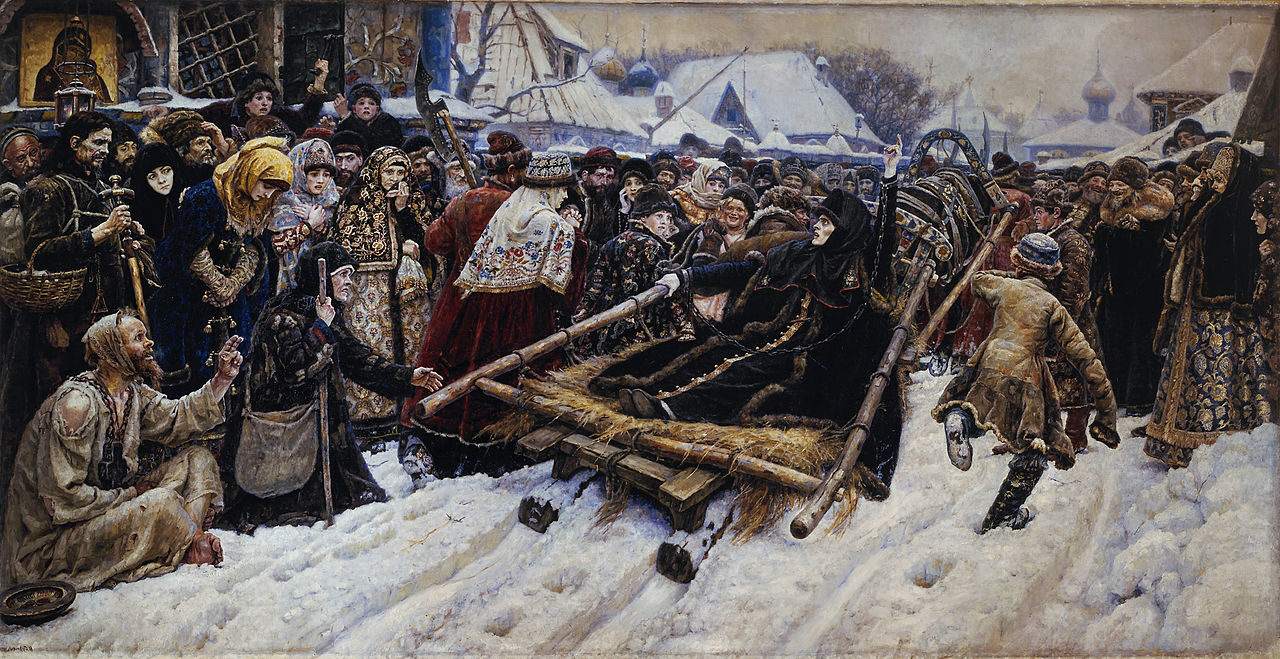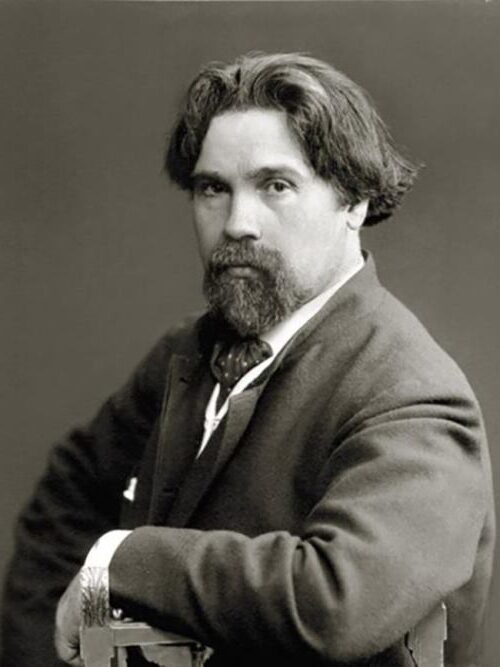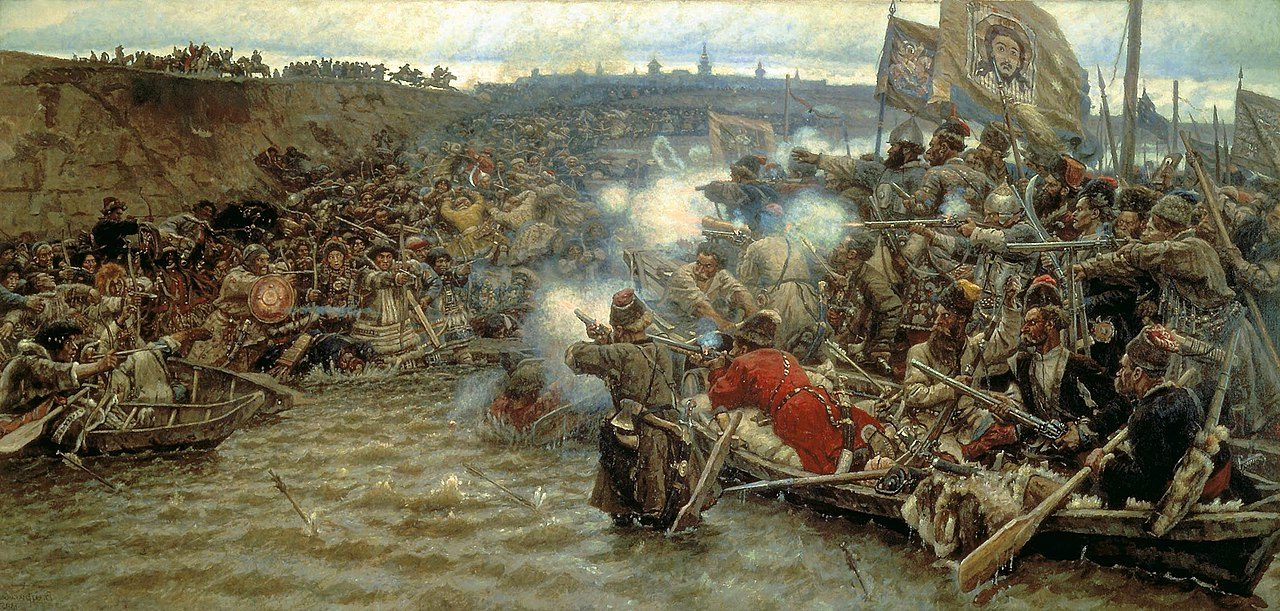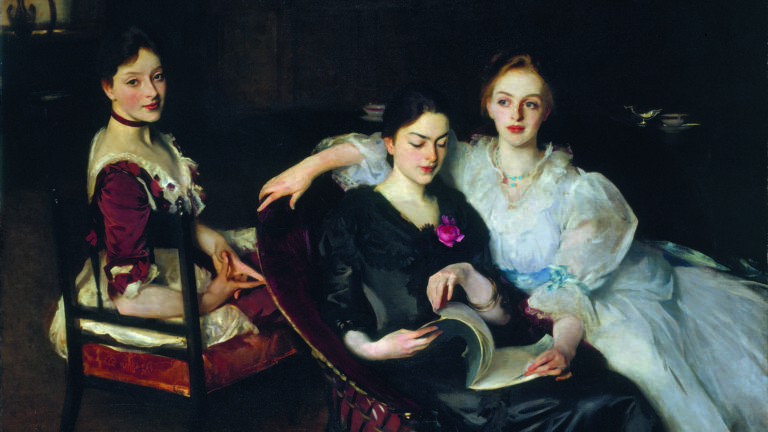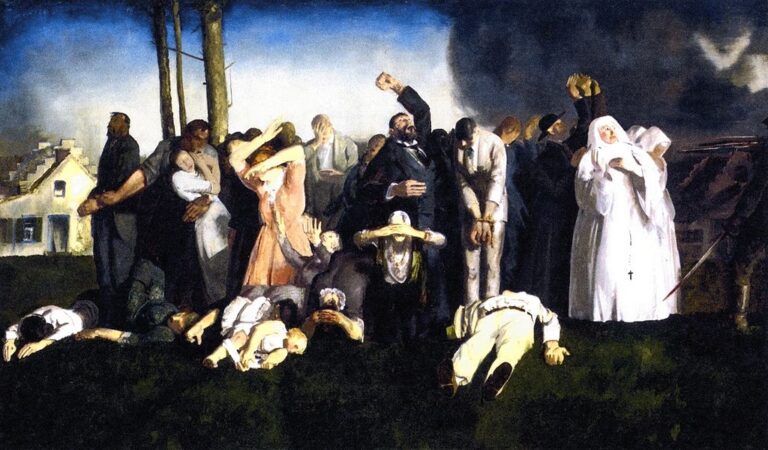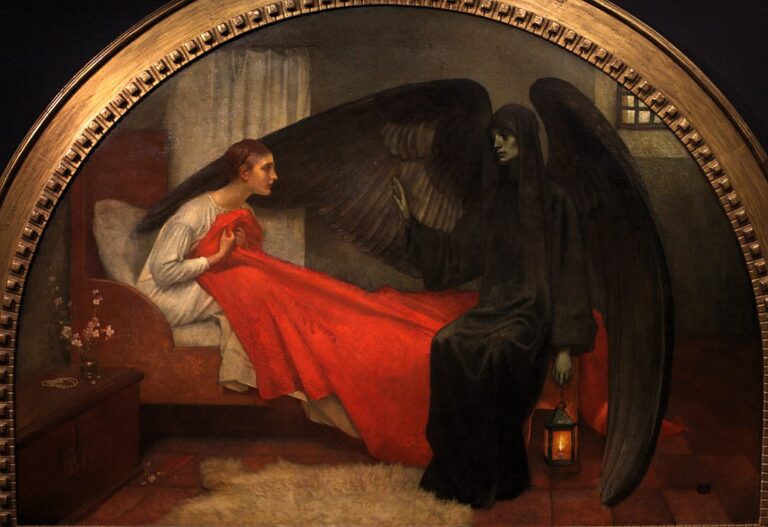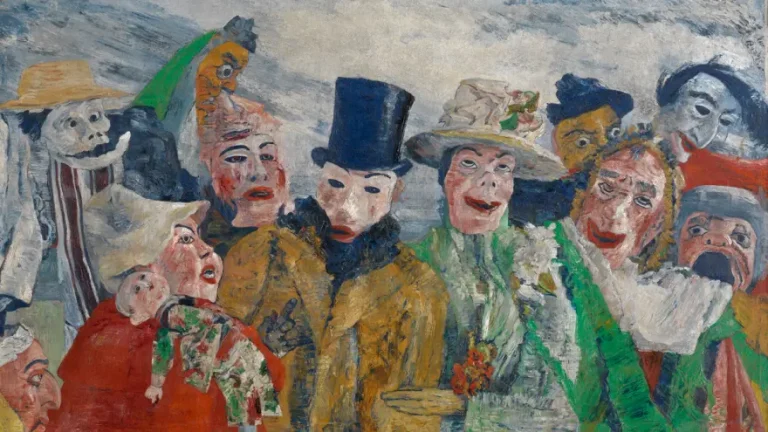Vasily Surikov Painter: The Master of Russian Historical Realism
Born: 24 January 1848, Krasnoyarsk, Yeniseysk Governorate, Russian Empire
Death: 19 March 1916, Moscow, Russian Empire
Art Movement: Realism, History painting, Peredvizhniki
Nationality: Russian
Teachers: Pavel Chistyakov, Bogdan Willewalde, and Pyotr Shamshin
Institution: Imperial Society for the Encouragement of the Arts
Vasily Surikov Painter: The Master of Russian Historical Realism
Biographical Overview
Vasily Ivanovich Surikov emerged as one of Russia’s most significant historical painters during the late 19th and early 20th centuries. His journey from a Siberian Cossack family to becoming a full member of the Imperial Academy of Arts showcases his remarkable talent and perseverance.
Early Life in Siberia
Vasily Surikov was born on January 24, 1848, in Krasnoyarsk, Siberia, into an old Cossack family with deep roots in the region. His ancestry played a significant role in shaping his artistic vision and connection to Russian history.
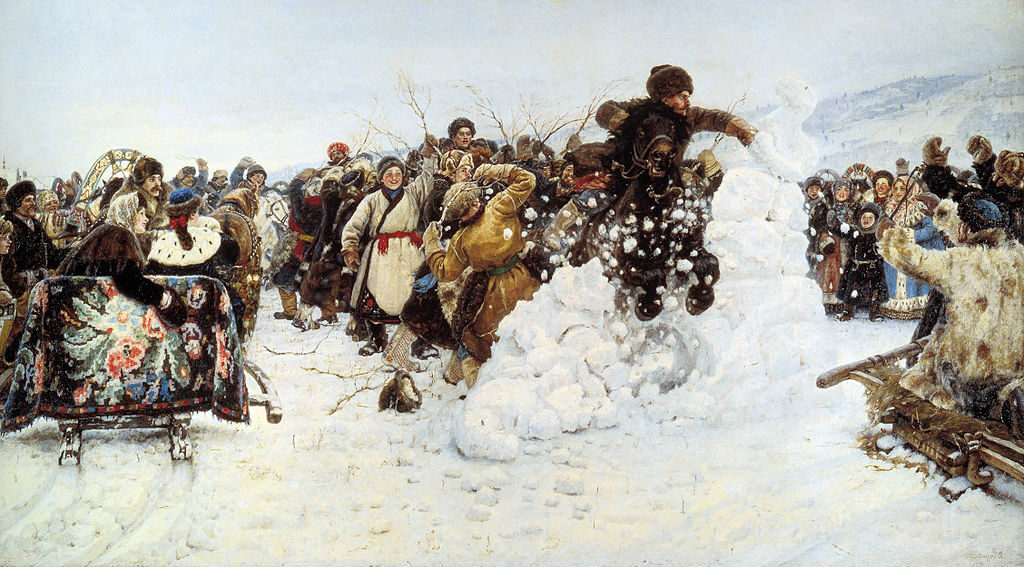
The Capture of Snow Town, 1891, by Vasily Surikov
Growing up in remote Siberia, young Surikov developed a strong sense of Russian cultural identity. The harsh Siberian landscape and local traditions left lasting impressions that would later influence his artistic style and subject choices.
His early artistic talents emerged in Krasnoyarsk, where he received his initial art education. The isolated location actually benefited Surikov, allowing him to develop unique perspectives untainted by contemporary European artistic trends.
Academic Development
Surikov’s formal artistic education began when he moved to St. Petersburg to study at the Imperial Academy of Arts. He trained under renowned Russian masters who recognized his exceptional talent for historical composition.
During his academic years, Surikov developed technical mastery while studying classical painting traditions. His education at the Academy provided him with rigorous training in composition, color theory, and historical subjects.
The academic environment of St. Petersburg stood in stark contrast to his Siberian upbringing. This contrast created a productive tension in Surikov’s work, combining academic precision with emotional depth rooted in his cultural heritage.
Surikov graduated from the Academy with a gold medal, affirming his status as a promising artistic talent in Russian cultural circles.
Participation in Peredvizhniki Movement
Surikov’s artistic career flourished when he joined the Peredvizhniki (The Wanderers), a progressive group of Russian realist artists who rejected academic restrictions. This association aligned perfectly with his desire to create authentic Russian historical narratives.
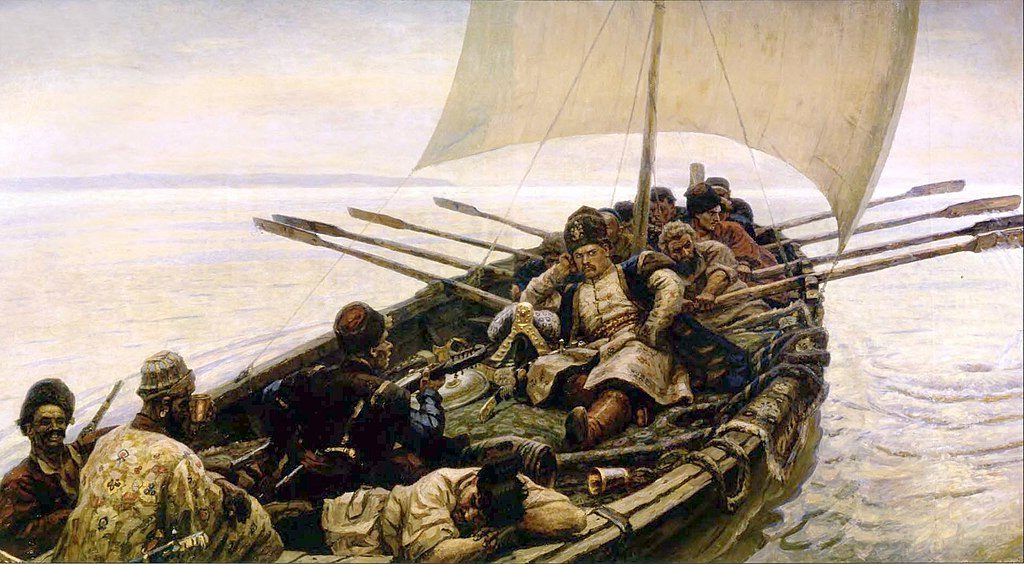
Stenka Razin, 1906, by Vasily Surikov
The Peredvizhniki movement embraced national themes and social commentary, elements that resonated deeply with Surikov’s artistic vision. His membership validated his approach to depicting pivotal moments in Russian history with psychological depth and visual drama.
Through exhibitions with the Peredvizhniki, Surikov gained nationwide recognition. His historical paintings stood out for their emotional intensity and meticulous historical research.
By 1881, Surikov had established himself as a master of historical painting with works that examined crucial turning points in Russian history. His association with the movement lasted throughout his productive career until his death in Moscow on March 19, 1916.
Major Works and Themes
Vasily Surikov created powerful paintings that brought Russian history to life through vivid colors and emotional scenes. His works captured pivotal moments in Russia’s past with remarkable historical accuracy and psychological depth.
Historical Paintings
Surikov’s historical paintings form the cornerstone of his artistic legacy. “The Morning of the Streltsy Execution” (1881) depicts Peter the Great’s punishment of the rebellious imperial guards with striking emotional tension. The painting’s composition brilliantly captures the conflict between old and new Russia.
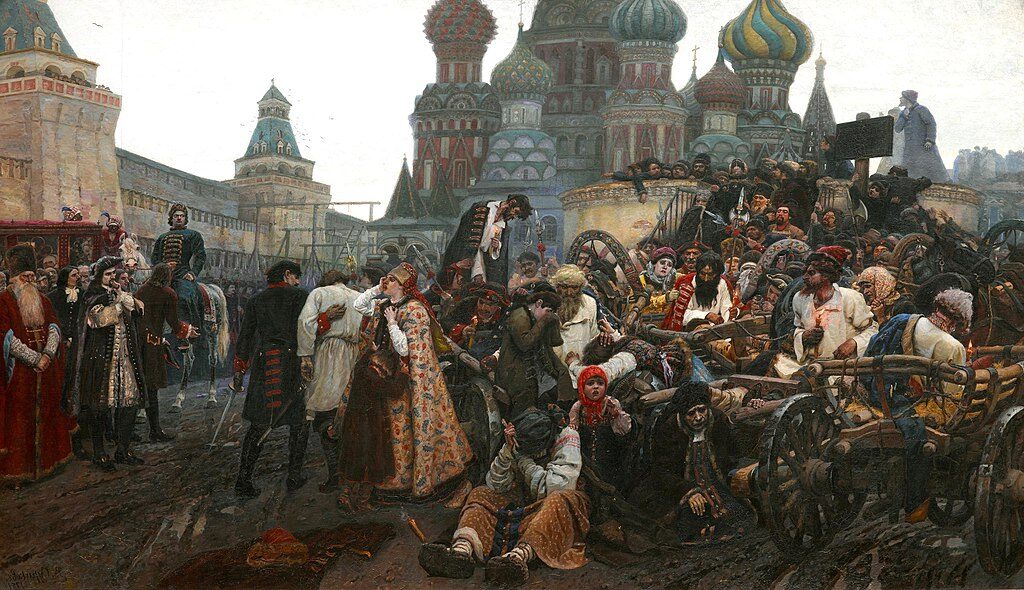
The Morning of the Streltsy Execution, 1881, by Vasily Surikov
“Boyarynya Morozova” (1887) portrays the arrest of a noblewoman who defied religious reforms. The dramatic winter scene shows Morozova defiantly raising her fingers in the Old Believer sign while being dragged away on a sleigh. The contrast between her dark figure and the snowy landscape creates powerful visual impact.
“Menshikov in Berezovo” (1883) depicts the fall from power of Peter the Great’s close advisor. The painting showcases Surikov’s talent for psychological portraiture through its depiction of the once-powerful figure in exile.
“Suvorov Crossing the Alps” (1899) celebrates the famous Russian general’s military campaign. The dynamic composition captures the soldiers’ struggle against harsh elements while following their determined leader.
Influence on Russian Culture
Surikov’s paintings helped Russians connect with their national history during a period of cultural self-definition. His works became visual textbooks that shaped how generations imagined their country’s past events.
Unlike European historical painters who often idealized events, Surikov presented history with psychological realism. He portrayed historical figures as complex humans rather than distant heroes.
His technique of placing ordinary people alongside historical figures in his compositions demonstrated the role of common Russians in shaping their nation’s destiny. This approach resonated with the growing nationalist sentiment of late 19th-century Russia.
Surikov’s influence extended beyond painting to literature, theater, and film. His vivid historical scenes provided inspiration for writers and directors seeking to explore Russia’s complex past.
Contributions to Religious Art
While known primarily for historical works, Surikov created significant religious art throughout his career. His religious paintings balanced traditional Orthodox iconography with his distinctive realist style.
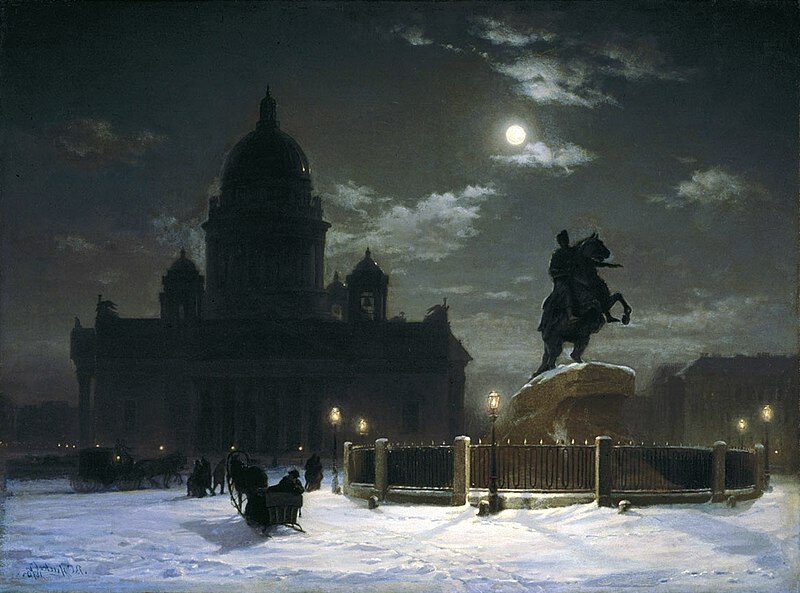
The Bronze Horseman, 1870, by Vasily Surikov
Surikov contributed to the decoration of the Cathedral of Christ the Savior in Moscow, painting several frescoes for this monumental church. His biblical scenes displayed the same attention to historical detail and human psychology found in his secular works.
“The Healing of the Blind Man” demonstrated Surikov’s ability to bring spiritual narratives to life with emotional authenticity. Rather than idealized religious figures, he depicted biblical characters as real people experiencing profound spiritual moments.
His religious paintings often incorporated elements of Russian folk culture, connecting biblical stories to the everyday experiences of ordinary Russians. This approach made sacred narratives more accessible to viewers.
Artistic Legacy and Recognition
Vasily Surikov’s contributions to Russian art have endured long after his death in 1916. His realistic historical paintings became cultural touchstones that continue to influence artists and educate the public about Russian history.
Exhibitions and Art Reproductions
Surikov’s works have been exhibited extensively throughout Russia and abroad. Many of his paintings are housed in the Tretyakov Gallery in Moscow and the Russian Museum in Saint Petersburg, where they attract thousands of visitors annually.
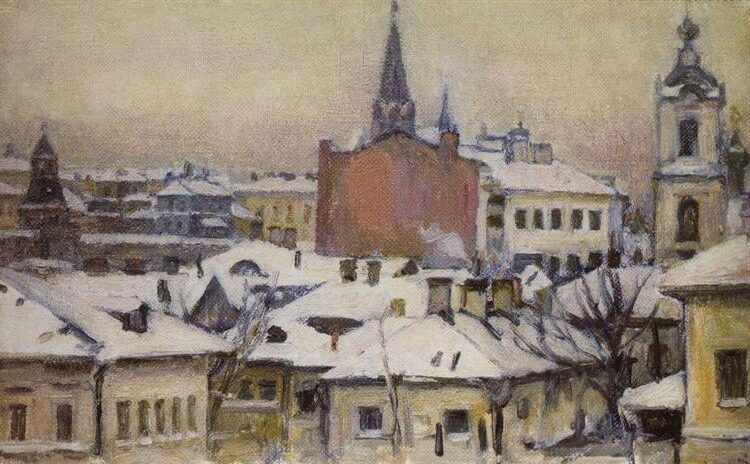
View of Kremlin, 1913, by Vasily Surikov
The Google Art Project has digitized several of Surikov’s masterpieces, making them accessible to global audiences. This digital preservation ensures his artistic vision reaches beyond physical gallery walls.
Art reproductions of Surikov’s paintings appear in Russian textbooks, on postcards, and as prints. His most famous works like “Morning of the Execution of the Streltsy” (1881) have been reproduced countless times.
Surikov’s historical scenes have appeared on Russian postage stamps and in documentary films about Russian art history. His detailed portrayals of historical events have helped generations visualize Russia’s past.
Resting Place
Vasily Ivanovich Surikov was laid to rest at Vagankovskoye Cemetery in Moscow. His grave has become a site of pilgrimage for art students and historians who wish to pay respects to this influential painter.
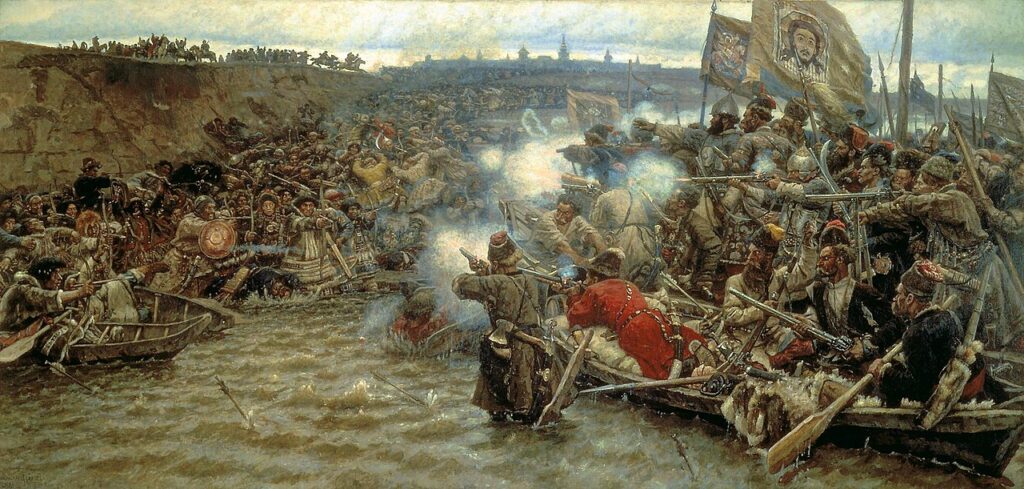
The Conquest of Siberia by Yermak Timofeyevich, 1895, by Vasily Surikov
The cemetery contains the graves of many notable Russian cultural figures, placing Surikov among celebrated company. A modest monument marks his burial site, reflecting the painter’s unpretentious character despite his artistic achievements.
The Russian government maintains his grave as part of the nation’s cultural heritage. Annual commemorations of his birth and death dates often include floral tributes at his resting place and special exhibitions of his work at major Russian museums.
Frequently Asked Questions
Vasily Surikov stands as one of Russia’s most significant historical painters, known for his dramatic portrayals of pivotal moments in Russian history. His technical mastery and emotional depth continue to captivate art enthusiasts worldwide.
What are the most renowned works of Vasily Surikov?
Surikov’s most celebrated paintings include “Morning of the Streltsy Execution,” depicting Peter the Great’s punishment of the rebellious guards. “Boyarynya Morozova” portrays a noblewoman being exiled for her religious beliefs.
“The Conquest of Siberia by Yermak” and “Menshikov in Berezovo” are also highly regarded masterpieces. These works showcase Surikov’s ability to capture tension and psychological depth in historical moments.
In which artistic movement is Vasily Surikov’s style typically classified?
Surikov is primarily classified as a Russian Realist painter. His commitment to historical accuracy and attention to detail align perfectly with Realism’s principles.
He was associated with the Peredvizhniki (The Wanderers), a group of Russian realist artists who broke from academic traditions. Though firmly rooted in realism, his emotional approach to historical subjects added a unique dimension to the movement.
What distinguishes Vasily Surikov’s approach to historical painting?
Surikov viewed history as deeply tragic and sought to capture the emotional reality beneath historical events. He developed his own method as a self-made master rather than following academic conventions.
His paintings often focus on moments of conflict, transition, or suffering in Russian history. Surikov had a remarkable ability to convey the psychological state of his subjects during pivotal historical moments.
How did Vasily Surikov contribute to the development of Russian art?
Surikov elevated Russian historical painting to new heights by infusing technical excellence with emotional depth. His work helped establish a distinctly Russian artistic identity independent of Western European influences.
As part of the Peredvizhniki movement, he helped democratize art by bringing Russian history to the people. His meticulous research and authentic portrayals set new standards for historical accuracy in painting.
Which historical figures and events did Surikov frequently depict in his paintings?
Surikov often portrayed crucial turning points in Russian history, particularly moments of conflict or social change. He painted Peter the Great’s modernization efforts, including the brutal suppression of the Streltsy uprising.
Religious conflicts featured prominently, as seen in “Boyarynya Morozova.” Surikov also depicted conquests like Yermak’s expansion into Siberia and the fall from grace of prominent figures like Alexander Menshikov.
What techniques did Vasily Surikov employ to achieve his distinctive visual effects?
Surikov mastered composition. He did this to create dramatic tension within crowded historical scenes. He strategically placed key figures to guide the viewer’s eye through complex narratives.
His color palette often employed stark contrasts. This was particularly in snow scenes to heighten emotional impact. Surikov’s attention to period-specific details in clothing, architecture, and customs resulted from extensive historical research. This contributed to the authenticity of his works.

